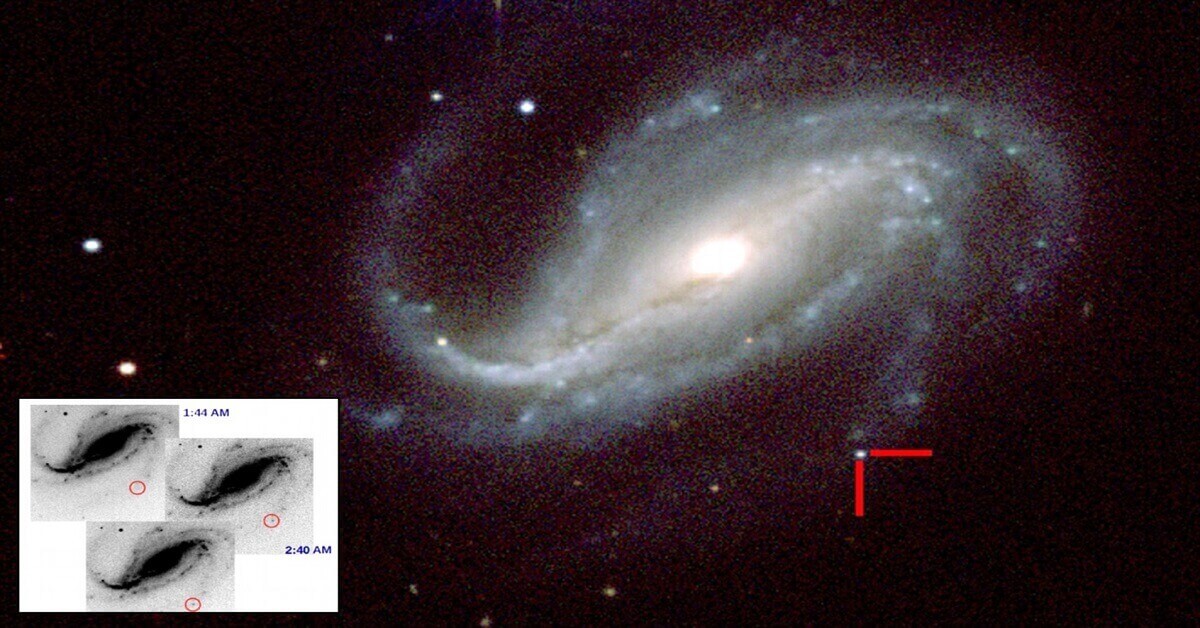
Scientists rely on the images captured to further study the planets and the stars. These images help in the further understanding of our solar system.
Images captured by an amateur astronomer in Argentina has helped scientists obtain their first view of the initial burst of light from the explosion of a massive star.
During tests of a new camera, Víctor Buso captured images of a distant galaxy before and after the supernova’s “shock breakout” — when a supersonic pressure wave from the exploding core of the star hits and heats gas at the star’s surface to a very high temperature, causing it to emit light and rapidly brighten.
A supernova is the explosion of a massive star at the end of its life cycle.
READ ALSO: 5000-year-old rock found in Kashmir; evidence for oldest evidence of supernova
To date, no one has been able to capture the “first optical light” from a normal supernova (one not associated with a gamma-ray or x-ray burst), since stars explode seemingly at random in the sky and the light from shock breakout is fleeting.
The new data can provide important clues to the physical structure of the star just before its catastrophic demise and to the nature of the explosion itself.
“Professional astronomers have long been searching for such an event,” said Alex Filippenko of University of California, Berkeley.
Filippenko followed up the discovery with observations at the Lick and Keck observatories in the US that proved critical to a detailed analysis of explosion, called SN 2016gkg.
“Observations of stars in the first moments they begin exploding provide information that cannot be directly obtained in any other way,” Filippenko added.
READ ALSO: NASA’s spacecraft sends images to base from a record-breaking distance
The discovery and results of follow-up observations from around the world were published in the journal Nature.
On September 20, 2016, Buso was testing a new camera on his 16-inch telescope by taking a series of short-exposure photographs of the spiral galaxy NGC 613, which is about 80 million light-years from Earth and located within the southern constellation Sculptor.
Luckily, he examined these images immediately and noticed a faint point of light quickly brightening near the end of a spiral arm that was not visible in his first set of images.
An international team of researchers later determined that the explosion was a Type IIb supernova – the explosion of a massive star that had previously lost most of its hydrogen envelope.
The team estimated that the initial mass of the star was about 20 times the mass of our Sun, though it lost most of its mass, probably to a companion star, and slimmed down to about five solar masses prior to exploding.

Post Your Comments